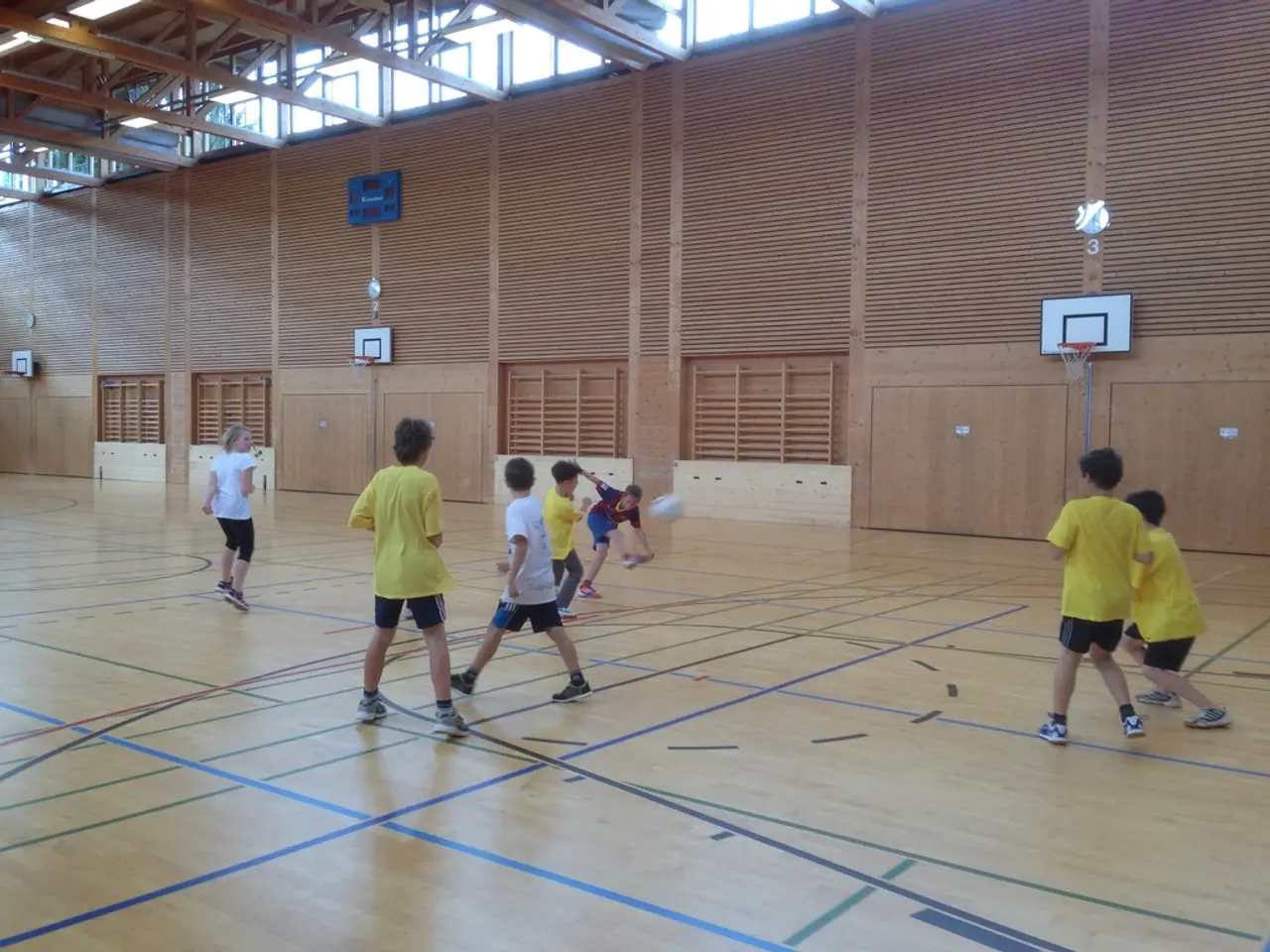School supplies shopping surge fueled by U.S. commercial ventures
In the year 2025, the back-to-school shopping season is transforming, reflecting a more complex and evolving consumer landscape. This change is significantly impacting American businesses, as they navigate the demands of a style-conscious, tech-integrated, and sustainability-aware generation.
Companies like Tractor Supply are supporting important community programs during the school year, such as local National FFA Organization chapters and 4-H clubs. This commitment to community initiatives remains a constant, even as shopping trends evolve.
Current trends in back-to-school shopping for 2025 emphasize a shift beyond traditional supplies. The diversification of spending is evident, with clothing and accessories (19%), electronics (17%), safety essentials (13%), extracurricular activities (13%), and online resources/subscriptions (13%) accounting for a significant portion of spending, following traditional school supplies (24%).
Tech and accessories are a key focus, with age-appropriate technology like the Gizmo Watch for younger kids and stylish smartwatches gaining popularity. Digital planners are replacing paper ones, and Minecraft-branded products are notably trending among children.
Fashion and personalization are also important factors. Students are seeking stylish, customizable backpacks and footwear, including Birkenstocks, Crocs with Jibbitz, and sneakers. Accessories such as keychains and charms, like those from Labubu and Jellycat, add personalization to their purchases.
Sustainability and thrifting are rising trends, with younger generations prioritizing eco-friendly clothing and secondhand/thrift shopping. This shift towards sustainability supports the circular economy and offers business opportunities for both traditional retailers and thrift stores.
Early and deal-driven shopping is another notable trend, with over half of shoppers starting or completing their buying, often pursuing early deals to combat inflation and higher costs.
The extended back-to-school shopping season allows businesses to capture early bird shoppers, maintain steady inventory turnover, maximize promotional effectiveness across multiple months, and build stronger customer relationships through extended engagement.
Artificial intelligence (AI) adoption is accelerating across the retail landscape, with younger generations leading the charge in embracing AI-powered shopping tools. Social media has become a powerful shopping tool for families during the back-to-school season.
Businesses like Verizon and DICK's Sporting Goods are also playing their part in preparing students for the school year. Verizon's Innovative Learning schools program donates tablets and provides necessary training to educators, while DICK's Sporting Goods partners with public schools to help fund sports programs across the nation.
The back-to-school season is expected to generate $30.9 billion in spending this year, demonstrating its significance in driving economic growth and ensuring students are well-equipped for the academic year. The clothing sector is experiencing robust growth during this season, providing a significant boost to fashion retailers, manufacturers, and the entire textile supply chain.
Businesses across the country are also supporting local schools, students, and teachers by donating funds and back-to-school essentials, and serving as community donation sites to pool resources for students and educators in need of extra supplies. September remains the top shopping month for back-to-school items, but consumers are stretching out purchases as early as June.
In conclusion, the 2025 back-to-school season demonstrates that American businesses continue to play a vital role in preparing students for the school year, adapting to the changing needs and preferences of consumers, and driving economic growth.
- Policy-makers and businesses should consider the evolving consumer landscape in the implementation of economic growth policies, as seen in the transformation of the 2025 back-to-school shopping season.
- The diversification of spending in back-to-school shopping for 2025, with emphasis on technology and fashion, presents opportunities for small businesses to innovate their product offerings and meet the demands of a tech-savvy generation.
- It's crucial for corporates and the chamber of commerce to prioritize education-and-self-development programs that equip young people with the necessary skills for the tech-driven world, given the increasing role of technology in commerce and everyday lifestyle.
- As fashion and personalization trends in 2025 back-to-school shopping gain traction, businesses should consider offering customizable products to cater to students' preferences and foster a sense of identity.
- To retain customers and build stronger relationships, businesses should adopt AI-powered shopping tools and optimize their social media presence, as seen in the growing adoption of AI and social media usage during the back-to-school season.
- In order to support a sustainable future and cater to the rising trend of eco-conscious consumers, businesses should consider investing in education-and-self-development programs that focus on sustainability and the circular economy.
- To maximize their financial resources and navigate the challenges of inflation and higher costs, consumers are adopting early and deal-driven shopping strategies, highlighting the importance of finance management education-and-self-development programs.




